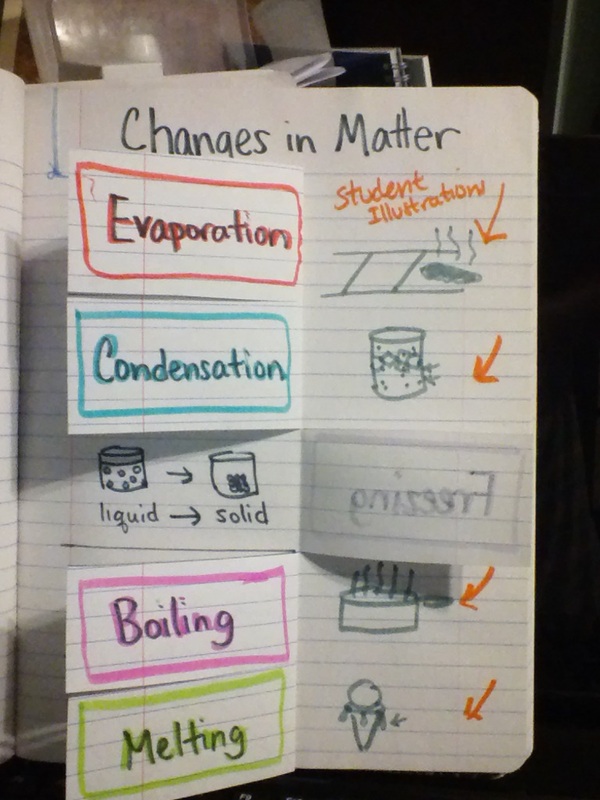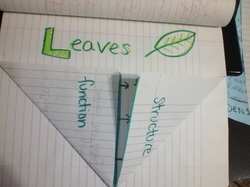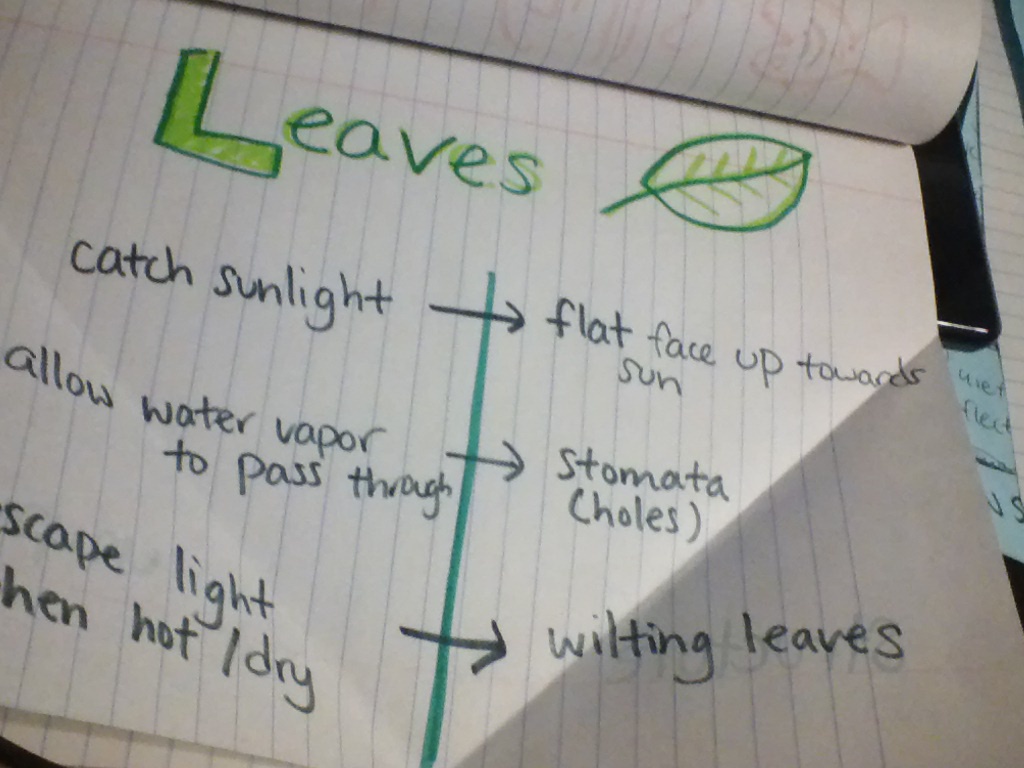Here's another example of a built-in foldable.
Under each flap, you can have students write the definition, or draw the phase change representations. Then, next to the word, on the next page, you can have them do something else. Below is an example of how students can then make more meaning by drawing or writing to describe an everyday example.
This is a great foldable to help organize thoughts on structure and function.
First you fold the top and bottom corners in to make a sideways house. Then, label the side of the page with the adaptation (leaves). You may want to flip the structure and function locations.
First you fold the top and bottom corners in to make a sideways house. Then, label the side of the page with the adaptation (leaves). You may want to flip the structure and function locations.
Then, underneath you can either provide the structure, and the students have to come up with the function, or vice-a-verse.






 RSS Feed
RSS Feed